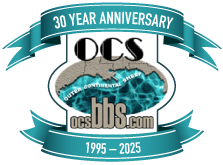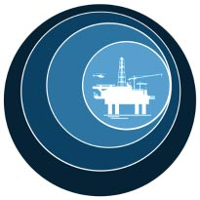Shallow Gas Blowouts -- One Rig Lost
Effective Date: 6/2/1975
 | Minerals Management Service Gulf of Mexico OCS Region |
Notice. No. 024
June 2, 1975
OCS Operations Safety Alert
Shallow Gas Blowouts -- One Rig Lost
Two offshore drilling rigs recently experienced blowouts after drilling into shallow gas zones.
A well on a jack-up mobile platform was coming out of the hole after drilling to 1150 feet RKB when a gas kick occurred. The gas flow was being diverted through two 6-inch divert lines, but also broke out around the outside of the drive pipe. Efforts to control the well flow were unsuccessful. All personnel were safely evacuated from the rig, which subsequently capsized. There was no pollution.
A semi-submersible drilling rig was drilling at 2500 feet RKB with conductor casing set at 1200 feet RKB when a gas kick occurred. The blowout preventer on top of the riser was closed and the diverter lines simultaneously opened. Pressure buildup in the riser forced the riser slip joint up and pushed the upper part of the riser and preventer-diverter assembly into the rotary table, preventing the utility of the divert system. The riser and associated equipment were damaged to the extent that the riser could not be released from its Gulf bottom assembly. The mudline blowout preventer was closed and kill operations were commenced. Gas began to surface around the rig, which began to lose buoyancy and it had to be moved off location. There were no injuries to personnel and no pollution occurred.
To prevent recurrence of these types of blowouts, the operator plans to take the following action:
1. Use additional casing strings and/or liners in the shallow portion of the hole in order to obtain more formation competency at the casing seats.
2. Plan casing and liner points based on the location of possible shallow gas zones indicated by geophysical data.
3. Use higher mud weights when drilling into suspected shallow gas zones.
4. Redesign bottom-hole drill assembly to minimize the possibility of swabbing.
5. Use closer control of drilling rate and surveillance of drilling operations.
6. Work on elimination of mechanical problems concerning riser-diverter assembly.
[signature] D.W. Solanas
Oil and Gas Supervisor
Field Operations
Gulf of Mexico Area






